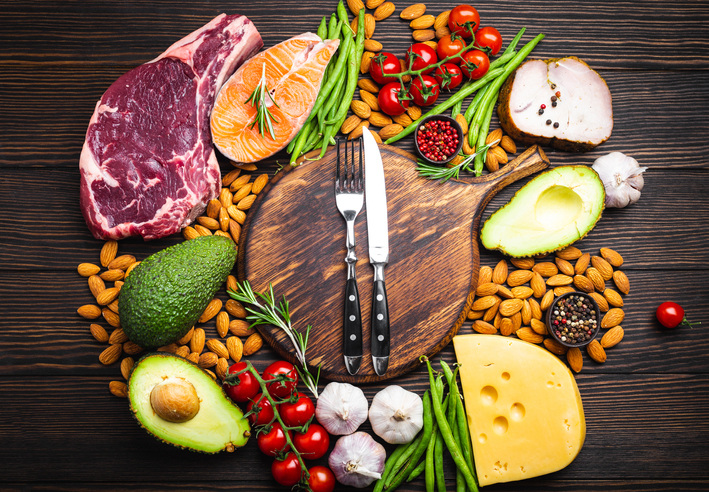If you’re looking to lose weight, a balanced approach toward protein rich foods can keep your muscles strong and your body healthy.
Salad bar. Practically everyone who has ever tried to lose weight has heard these two little words. But loading up your plate all the time with high-fiber, low-calorie vegetables may not be the best way to shed those extra pounds.
“When you’re losing weight, you will lose both muscle and fat,” says Jill Weisenberger, MS, RD, a registered dietician who sees clients in Newport News, Va., and the author of Diabetes Weight Loss: Week by Week, “so the best way to prevent the loss of the muscle during weight loss is through resistance exercise and adequate protein.”
More than just making us look good, strong muscles come into play every time we move our bodies. Losing muscle mass, can affect how well you function in your life, especially as you get older.
Protein Requirements
According to ChooseMyPlate.gov, adults who get less than 30 minutes of exercise a day should eat between 5- and 6-ounce equivalents of protein each day. One “ounce equivalent” is equal to one ounce of meat, one egg, 1/2 ounce of nuts or seed or one tablespoon of peanut butter. You will need additional protein if you are more physically active.
Weisenberger, though, likes to simplify things even more, telling her clients, “These are protein-rich foods—let’s make sure we eat at least one good serving at each meal.”
Good Protein Sources
Look for protein-rich foods that are also low in fat, especially saturated fats that have been linked to type 2 diabetes and cardiovascular disease. Here are some examples:
- lean cuts of beef and pork, skinless chicken, or lean deli-sliced turkey or chicken
- steamed shrimp or other seafood rich in omega-3 fatty acids, such as salmon and trout
- beans, peas and soy products
- unsalted nuts
- Learning healthy cooking techniques, such as steaming shrimp instead of frying, can also keep unwanted saturated fat out of your diet.
Balanced Approach to Protein
When it comes to protein, Weisenberger prefers to take a “balanced” approach. In addition to eating enough protein, “the number one thing is spreading it out over the day,” she says. This means that each meal should account for one-third of your protein intake.
Eating protein more frequently promotes maximum muscle synthesis, which is especially important for athletes, as well as for the elderly who lose muscle mass at a very high rate.
In her practice, Weisenberger finds that given the plethora of meaty entree choices, most people don’t have trouble eating enough protein in the evening.
In designing sample meal plans, she asks her clients to cut back the amount of protein at dinner. The excess is then rolled over into breakfast, which tends to be more challenging for people to add protein.
High-Protein Breakfasts
For some, eating more protein at breakfast simply means eating dinner-like meals in the morning.
“I do have patients who eat turkey sandwiches and things like that for breakfast, particularly if they have a long drive for work, a long commute,” says Weisenberger. Reheating leftovers from dinner the night before is also a great idea, although it’s a culinary option that may not suit everyone’s tastes.
Other high-protein food options for breakfast that are a bit more “traditional” include:
- low-fat cottage cheese without a lot of additives
- Greek yogurt, which is higher in protein than regular yogurt
- whey protein added to smoothies
- soy products (not just for vegans) like scrambled tofu, or “eggless” salad made with tofu, vegan mayonnaise and turmeric for color
Rule-Free Weight Loss
Beyond helping people spread their protein out over the day, Weisenberger doesn’t give her clients many rules. Research can be found that supports any number of weight loss methods—from eating cake at breakfast to snacking more often.
Plus, Weisenberger has found that each client is unique when it comes to losing weight. For some, eating three times a day may work well; for others, eating five or six smaller meals is better.
“I would rather my patients make it work for them than fit their own style to a bunch of rules,” she says. “I’d rather them find the things that work for them.”
Updated: originally published in the Health Journal 8-2-2013

